Stolte Farm, Wairarapa
Clarence and Elise Stolte are dairy farmers in the West Taratahi region of the Wairarapa. They were farming as sharemilkers for 15 years before progressing into the family equity partnership.
Over this time the family has expanded its operation to encompass a 170-hectare dairy unit and a 206-hectare support block.
The Stoltes enjoy the farming lifestyle and being able to offer their five children the opportunity to grow up on a farm and even be farmers one day, which is “pretty cool.”
Since becoming equity managers within the business, the Stolte’s mindset is that if they are farming “it must be long term. A 10-year plan, minimum”.
This plan for the farm and business is based on long-term sustainability with goals that are consistent with achieving this. They farm to the concept of “knowledge and experience applied well.”
Download this story
Download a copy of the Stolte Farms story here [PDF, 660 KB]
About the Stolte dairy farm system
The farm is set on stony, free-draining, summer-dry soils which enable the farm to split calve 250 spring cows and 220 autumn cows. With carry overs in the mix, the target is to never milk more than 500 cows at once.
There are 90 hectares of irrigation, but the water take is heavily restricted, and usually stopped by December. This means summer pasture production is heavily constrained by soil moisture.
Total milk solids production is consistently in the 210,000-220,000kgMS range, with supplementary feed inputs of maize silage, pasture silage, summer turnips and palm kernel if necessary.
The farm utilises a 400-cow feed pad for most of its supplement feeding to reduce wastage.
The Stoltes run a refined, low-cost system. This consistently optimises the farm capabilities within managed inputs and controlled expenditure.
Achievements include two independent financial benchmarks putting their business in the top 10 percent for profitability for New Zealand. Clarence and Elise also won the 2016 Wairarapa Hawke’s Bay Sharemilker of the Year.
Table 1: Cow numbers and production
| Peak cows | kg MS | kg MS/cow2019 | |
| 2019 | 491 | 225817 | 460 |
| 2020 | 470 | 218386 | 465 |
| 2021 | 479 | 220413 | 460 |
| 2022 | 498 | 207433 | 417 |
| 2023 | 516 | 218454 | 423 |
The business plan for the farm is to “utilise all assets as well as possible”.
What changes have been made?
- Never carry more livestock than they must. Right stocking policy and reducing animal wastage.
- Control on feed inputs with sustainable and, where possible, self-contained feed inventory options.
- More efficient use of nutrients, with a focus on reducing fertiliser-based nitrogen (N) but utilising effluent and compost nutrients more efficiently. Over the last few years, N use has reduced from 142kg/ha to 70kg/ha. This comes down to less total use, timing of application, and paddock selection.
- Feed pad and compost barn (recent addition)
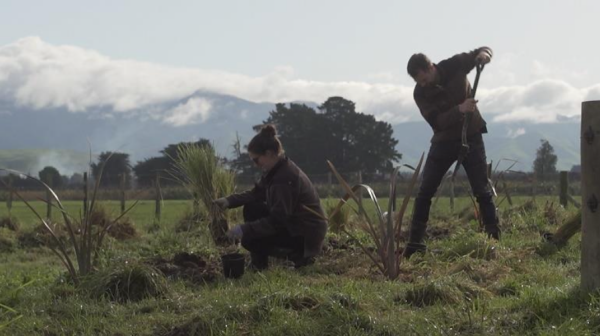
- Retain winter milk income while reducing the environmental footprint.
- Centralise workload to improve efficiency and reduce effort.
- Approximately 1000 natives are planted per year. Elise set up a native nursery with the primary objective to enhance the farm and biodiversity through planting in riparian strips, and a wetland. It should be noted this nursery is a standalone business with its own business plan.
- Increasing full-time equivalents from two to three. This has enabled less reliance on relief staff as well as releasing more time for mentoring and investing into skill growth.
The Stoltes’ farm resides in a sensitive farm catchment (Parkvale), and as one of the few dairy farms in this catchment there is a sense of responsibility and need to be part of the change process.
From the business plan, each of the following presents the “why” for each change.
- Constant measurement and review enable the stocking rate to be managed within a season.
- Homegrown and locally sourced supplements are the preferred cost-effective feed option. Future supplement use will be driven by cost, return and environmental footprint.
- Composting barn: after a few years of thought, a compost barn, next to the feed pad, was set up in 2023, with a view to ensure long-term sustainability of the business. The compost barn enables the Stoltes to manage strategically when cows are on pasture, which reduces pasture damage and significantly reduces nitrogen loss through leaching. Used well, it brings improvements in animal welfare while making life a little easier for the farm team. The compost should last at least three years and will then be used as a source of crop/pasture nutrient when replaced.
The above changes are a win for the environment, cows, and people.
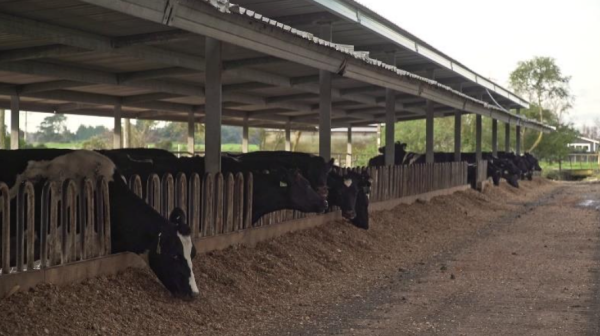
GHG modelling method
The farm was modelled in Farmax for the six seasons presented in this report.
What have been the impacts of the changes?
Figure 1: Total biological emissions (methane and nitrous oxide) per hectare across the whole farm (all blocks).
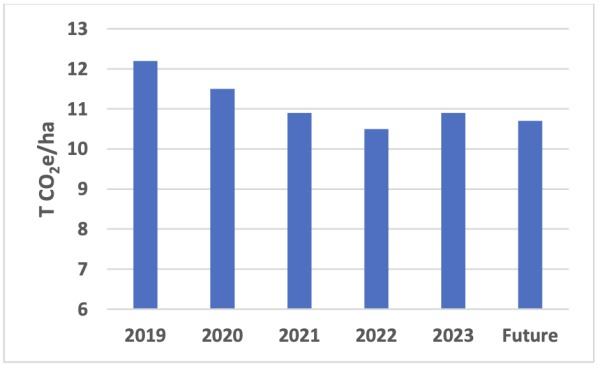
Table 2: Summary of emissions and operating profit.
| 2015/16 | 2023 | Future | |
| Total biological emissions (T CO2e/ha) | 12.2 | 10.9 | 10.7 |
|
Methane (T CO2e/ha) |
9.2 | 8.5 | 8.3 |
|
Methane (kg CH4/ha) |
367 | 339 | 330 |
|
Nitrous oxide (T CO2e/ha) |
3 | 2.4 | 2.3 |
|
Emission intensity (kg CO2e/kg MS) |
9.2 | 8.5 | 7.8 |
| Fertiliser N (kg N/ha) | 142 | 70 | 70 |
| kg N Loss per ha | 88 | 79 | 54 |
|
Farm profit $/ha |
5764 | 5173 | 5925 |
Farm profit is at standardised cost with Fonterra milksolids prices and winter milk premiums at the time.
The actions the Stoltes identified through their farm planning process for the Future scenario, are likely to translate into a reduction in greenhouse gas emissions of 12 percent and a 38 percent reduction in nitrogen loss to water when compared with 2015/2016.
The spike in emissions in 2023 was driven by a 50 percent wetter (+468mm) than average season generating higher pasture production,15 t DM/ha. A return to longer running average grass growth of 13 t DM/ha as modelled (Future) in Farmax will bring greater efficiencies and continuing reduction in GHG emissions, without loss of profitability.
With the feed pad and compost barn, feed wastage is expected to reduce. Greater efficiencies will be expressed in higher milk yields for the same inputs and less variance in cow liveweight.
The compost barn is expected to reduce nitrogen leaching loss by 13 percent, with no other changes to the system.
Clarence and Elise are now realising the goal of enhanced biodiversity on farm through planting almost 1000 homegrown trees annually as riparian strips along water ways and the development of a wetland. These planted areas will hopefully host an array of natural wildlife and birdlife, while protecting streams to bring back aquatic biodiversity.
Recruitment of another full-time person enables Clarence to focus on farm improvements and releases him to opportunities off-farm, including work in the Parkvale catchment group.
What process did they go through to make the changes?
- There was plenty of research and field work to show what works and what doesn’t. Learning from others is an important element of the business.
- This was part of the motivation behind joining the Parkvale catchment group in 2020, but also motivated by learning about the freshwater regulations and understanding water quality in the catchment. Being part of the group enables them to be at the forefront of changes coming to the region so they can understand how these changes impact their farming business and adapt, as necessary.
- They use internal monitoring and self-analysis to confirm the farm is tracking to plan.
- Clarence has utilised Overseer modelling to test implications of farm system changes including the introduction of a compost barn.
- External Dairy System Monitoring benchmarking is carried out to check performance against the Stolte’s peers.
What other changes are planned?
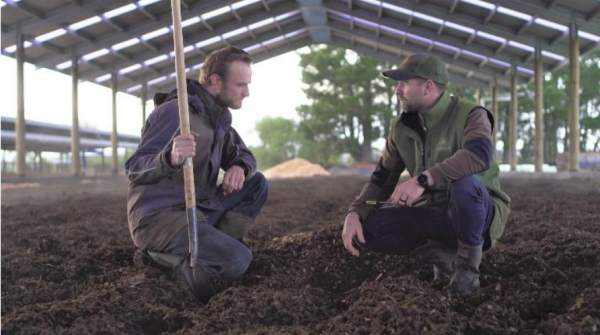
The composting barn is a new addition to the business. Close monitoring and refinement will be needed over the next few seasons to ensure it delivers to expectations.
The programme of riparian and wetland planting will continue.
What drives or constrains these changes?
- The property is prone to summer dry conditions which can change the use of supplements.
- Parkvale catchment restrictions will be adhered to, and this could require further changes to the farm system.
- The cost benefit of imported maize silage needs reviewing, especially in a low milk price environment.
What are they doing to ensure climate resilience?
- With exposure to summer dry conditions, the farm is exploring feasibility of increasing winter milk supply, and reducing spring supply, to align with reliable pasture growth.
- Clarence and Elise are looking to reduce reliance on irrigation and brought-in supplement.
What advice do they have for other farmers?
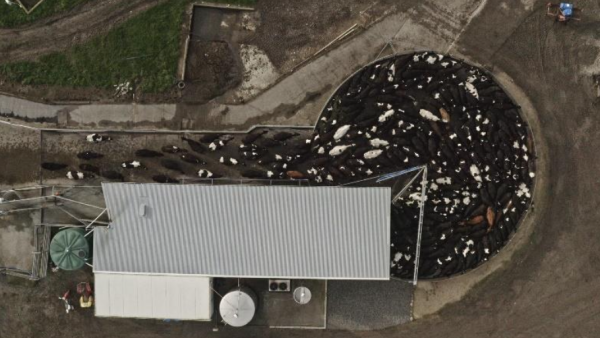
- Clarence and Elise encourage people to have their own sustainable farming story.
- They would also encourage engagement with catchment groups. They both sit on the Parkvale catchment committee and have strong community involvement.
- They are proud to open their farm to schools and cadets to come and learn about farming and get hands on with the planting of native trees grown by Elise in her nursery.
“Opening up to the community is important to hold us accountable to what we are doing. We hope it brings pride in the food produced within the community.”
Published: July 22, 2025

